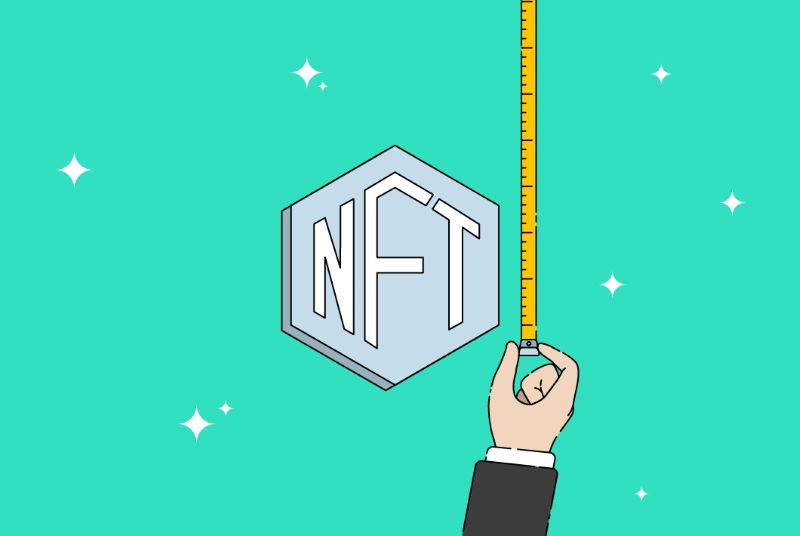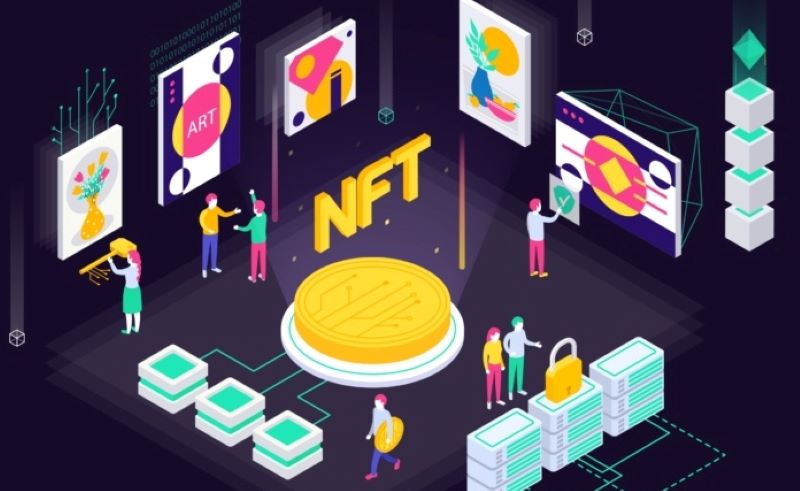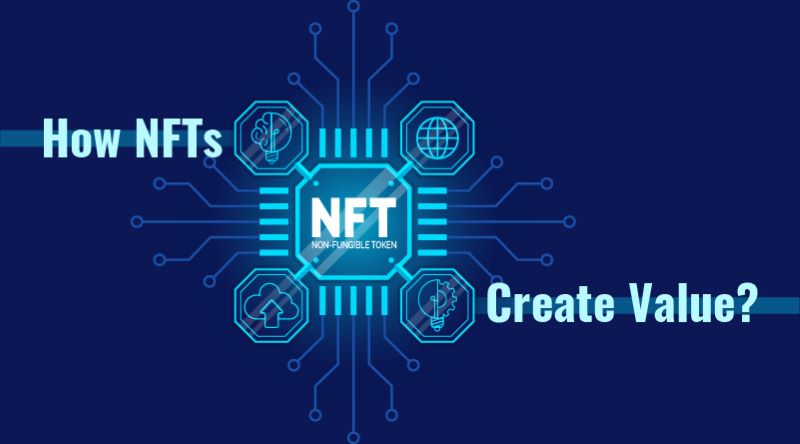NFT Valuation is a complex process influenced by various factors that determine market prices. As the NFT market continues to evolve, understanding these key drivers is essential for investors and collectors alike. This article explores three crucial factors—uniqueness, demand and supply, and the impact of creators—that play a significant role in shaping the value of NFTs in today’s dynamic marketplace.
Overview of NFT Valuation
Definition
NFT Valuation, or the process of determining the value of a non-fungible token (NFT), is becoming increasingly important in the rapidly growing NFT market. Unlike traditional assets, the value of an NFT is not solely based on physical factors but also depends on intangible elements such as uniqueness, origin, and the emotional value of the artwork. This means that the value of an NFT can fluctuate significantly based on the market, consumer sentiment, and various factors related to art, culture, and technology. Therefore, understanding NFT valuation is crucial for anyone involved in the NFT market.
Role of NFT Valuation
The role of NFT Valuation is vital in the context of the ever-growing NFT market. Firstly, accurate valuation enables buyers and sellers to make informed decisions in transactions. Secondly, NFT valuation also contributes to building trust within the community, thereby promoting investment and the use of NFTs in various fields, such as art, gaming, and entertainment. Finally, this process also helps developers and artists gain a clearer understanding of the value of their work, thereby shaping their future business and creative strategies. The importance of NFT valuation cannot be overstated in this dynamic market.
NFT valuation is a complex but essential process in the NFT market. It involves considering various factors, both tangible and intangible, to determine the fair value of an NFT. As the market continues to evolve, the methods and approaches to NFT valuation will also need to adapt to ensure transparency, trust, and sustainable growth in this exciting new space.
Factor 1 – Scarcity in NFT Valuation
Scarcity is one of the most crucial factors in NFT valuation, playing a decisive role in shaping the value of a non-fungible token. Understanding the concept of scarcity is fundamental to comprehending NFT valuation.
Definition of Scarcity
Scarcity refers to the level of uniqueness of an NFT. If an NFT has only one unique version or a limited number of editions, it will typically have a higher value compared to NFTs that are mass-produced. This stems from the principle of supply and demand in economics: when supply is less than demand, the value of that asset tends to increase.
Impact on Buyer Psychology
Scarcity not only affects market value but also impacts the psychology of buyers. Rare NFTs can create a sense of desire and scarcity among consumers, making them willing to pay more to own these unique pieces. This is especially true in the art community, where uniqueness and personalization are highly valued. The emotional connection to scarcity is an important aspect of NFT valuation.
Forms of Scarcity
Scarcity can be expressed in various forms, including:
- Number of editions: NFTs with one or a limited number of editions will have higher value.
- Exclusive certification: NFTs with certification from the artist or a reputable source, indicating that it is truly a unique work.
- Historical significance: Some NFTs may be associated with important events or famous figures, increasing their value.
Scarcity in the Market Context
In the current NFT market, many collectors and investors often seek works with high scarcity for investment. Understanding scarcity can help investors and artists develop reasonable pricing and product development strategies. This not only helps them optimize profits but also contributes to enhancing the artistic value within the NFT community. The ability to assess scarcity is a crucial skill in NFT valuation.
Scarcity is an indispensable factor in the NFT valuation process. It profoundly affects both the economic value and the psychology of consumers, contributing to the creation of a dynamic and exciting investment environment in the NFT field.
Factor 2 – Innovation and Technology in NFT Valuation
Innovation and technology are crucial determinants in NFT valuation (non-fungible token). This factor not only influences how NFTs are created and issued but also shapes the entire user experience and perceived value of the product. Understanding the role of innovation and technology is key to comprehending NFT valuation.
Definition of Innovation and Technology
Innovation in the context of NFTs often involves new technologies and creative ideas in developing, managing, and trading tokens. Blockchain technology is the core foundation for NFTs, enabling ownership verification, transparency, and immutability of transactions. The development of new protocols, trading platforms, and creative tools is driving innovation in this field.
Impact on Perceived Value
NFTs built on modern technologies are often considered more valuable due to their innovation and potential applications. For instance, an NFT created using virtual reality (VR) or augmented reality (AR) technology can provide a unique experience for users, which will increase its market value. The combination of art and new technology helps create more innovative products, attracting more investors and consumers. This perceived value is a crucial aspect of NFT valuation.
Forms of Innovation
Innovation in NFTs can be expressed in various ways, including:
- Creative platforms: The development of platforms like OpenSea, Rarible, and Foundation, where users can easily create, trade, and manage NFTs.
- Unique features: Some NFTs incorporate interactive or gamification features, allowing users to engage in the experience more dynamically.
- DeFi ecosystem: The combination of NFTs and decentralized finance (DeFi) services opens up new possibilities, such as lending or generating passive income from holding NFTs.
Market Competitiveness
With the rapid development of technology and innovation, creators and investors need to keep up with trends to leverage advantages. NFTs with advanced technology and innovation often attract attention and can achieve higher prices compared to traditional products. Therefore, innovation is not only a valuation factor but also a strong competitive element in the NFT market. The ability to innovate and adapt to new technologies is essential for success in NFT valuation.
Innovation and technology play an essential role in NFT valuation, influencing not only perceived value but also shaping the future of the market. The continuous development of technology will continue to create new opportunities for artists and investors while increasing the value of NFT products globally.
Factor 3 – Market Indices and Trends in NFT Valuation
Market indices and trends are among the important factors influencing the value of NFTs (non-fungible tokens). They not only reflect the current state of the market but also shape how investors and consumers anticipate the future of NFTs. Understanding the role of market indices and trends is crucial in comprehending NFT valuation.
Definition of Market Indices and Trends
- Market Indices: Market indices are statistical figures or metrics that help determine the strength and weakness of the NFT market. These indices may include daily trading volume, the number of NFTs sold, or the total number of active users on NFT platforms.
- Market Trends: Market trends represent the general direction of prices and trading activity over a certain period. Trends can be classified as upward, downward, or sideways and often reflect investor sentiment as well as the overall economic situation.
Impact on Investment Decisions
Market indices and trends can significantly influence the investment decisions of individuals and organizations. When indices rise, indicating a booming market, many investors may decide to purchase NFTs with the expectation that their value will continue to increase. Conversely, if indices decline, investors may become cautious and stop investing or even sell their NFTs. The ability to interpret these signals is a key aspect of NFT valuation.
Important Indices
- Trading Volume: NFT trading volume indicates the level of interest and demand for specific products. High trading volume usually signifies strong market interest and can lead to higher values.
- Average Price: The average price of NFTs over a period also provides information about price trends. If the average price increases, this may indicate that the market is developing positively.
- Number of Participants: An increase in the number of participants on NFT platforms may suggest that the market is expanding and has growth potential.
Trend Analysis
- Long-Term Trends: Understanding long-term trends can help investors anticipate major fluctuations in NFT values. For example, an increase in the number of NFTs related to digital art may indicate growing interest in this field.
- Market Sentiment: Market sentiment, including investor emotions and expectations, is also a crucial factor. Factors such as positive or negative news can significantly impact the value of NFTs.
Impact of External Events
Market indices and trends are also influenced by external events such as economic fluctuations, changes in legal regulations, or the emergence of new technologies. These events can alter investor sentiment and, consequently, impact the value of NFTs.
Market indices and trends play an essential role in NFT valuation. They provide investors with a better understanding of the current market situation, enabling them to make informed investment decisions and seize potential opportunities. Closely monitoring these indices will help users grasp trends and accurately assess NFT values, thereby optimizing profits in trading.
Understanding the dynamics of NFT valuation is crucial for both investors and creators navigating the ever-evolving digital landscape. The three key factors—scarcity, innovation and technology, and market indicators—play a significant role in determining the market prices of NFTs. As the market continues to mature, keeping a close eye on these elements will help stakeholders make informed decisions and capitalize on emerging opportunities. For more insights into the world of NFTs, stay tuned to Blockchainbulletinweekly.




